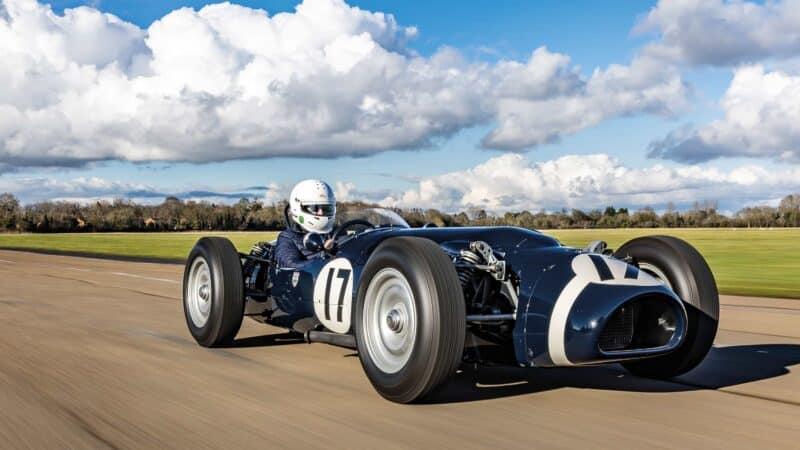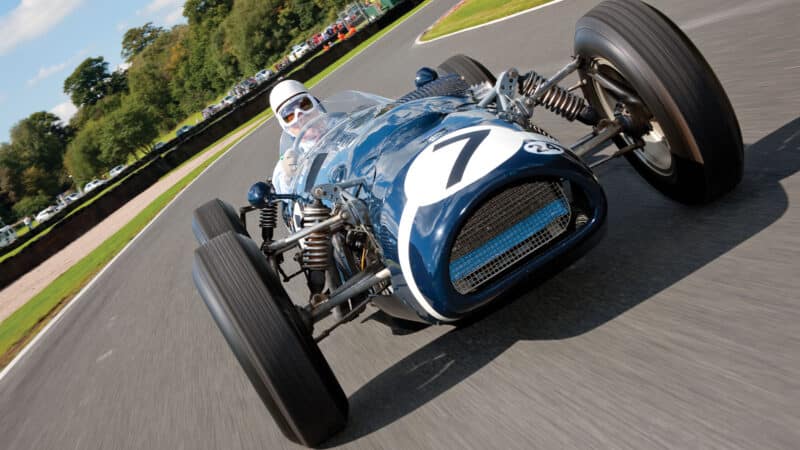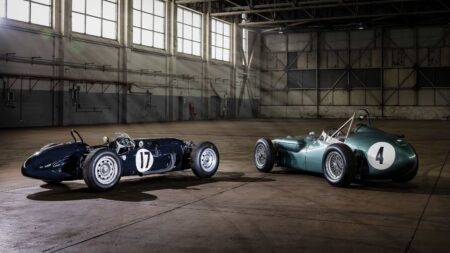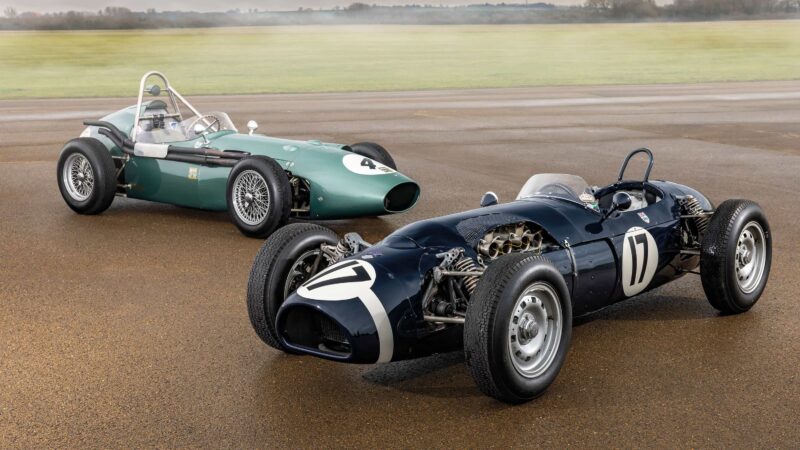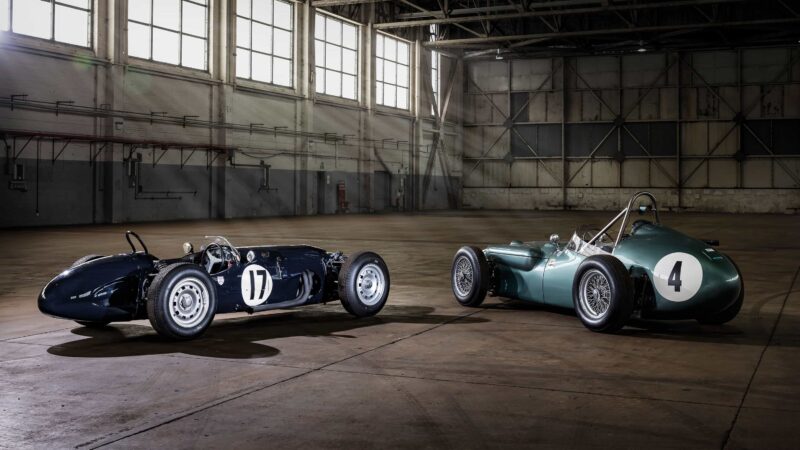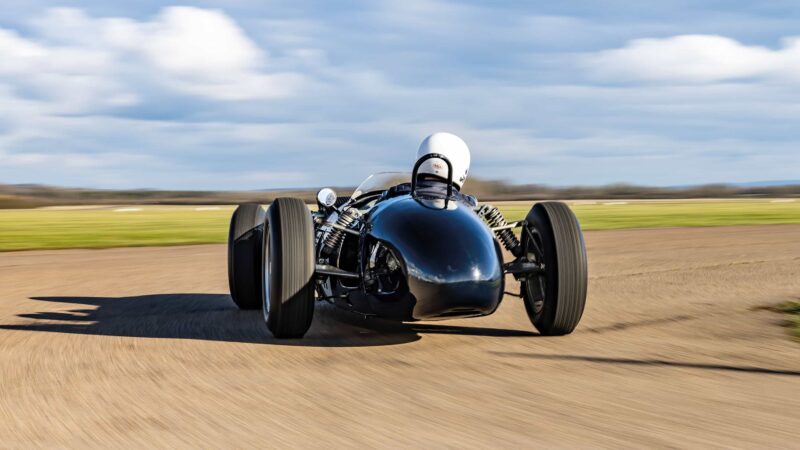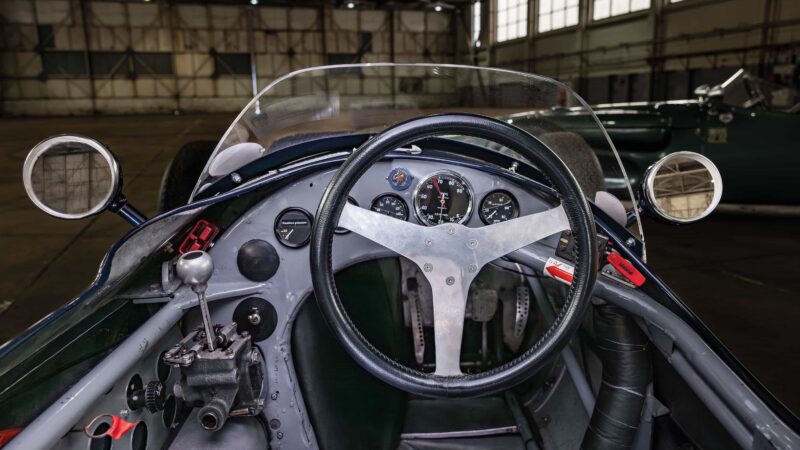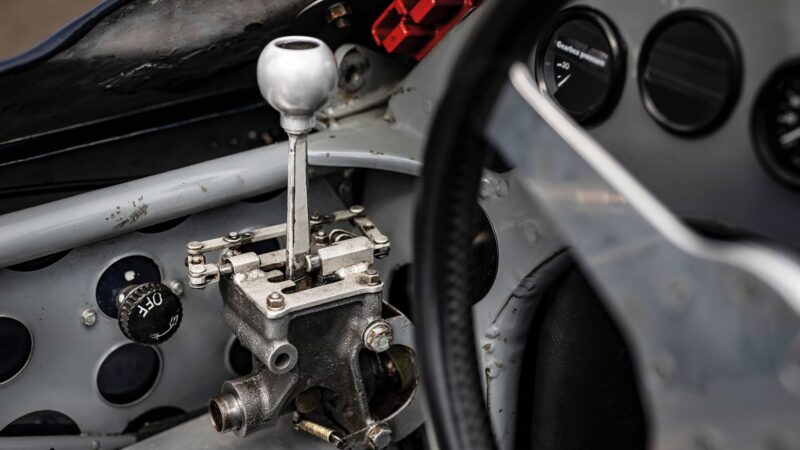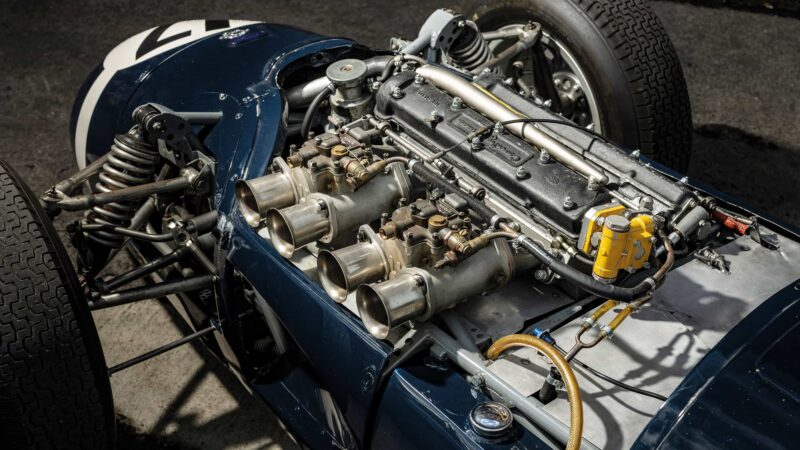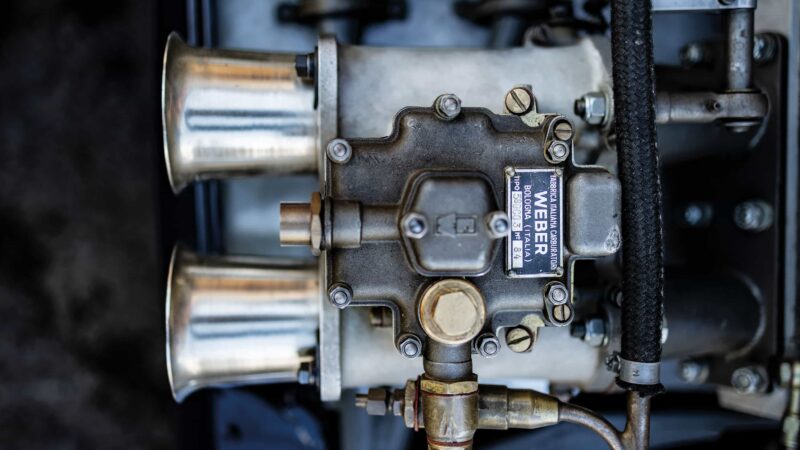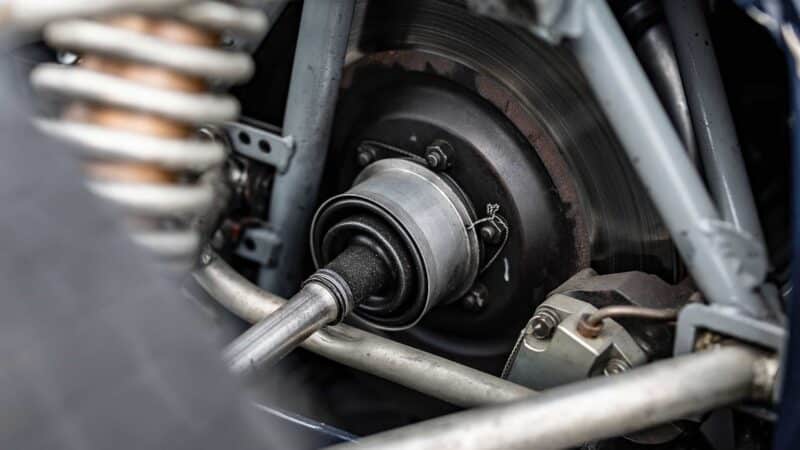The result was the P99. Designed by Claude Hill, the car showed promise in only its second race at the 1961 British GP, as Phillips explains.
“Dipping into the ankle-high cockpit of the Rob Walker-entered car, he lapped three seconds quicker than his 1959 Nürburgring 1000Kms-winning DBR1 team-mate [Jack Fairman] in practice. Out of the race in his Lotus, Moss took over for the final 20-odd laps and put rivals on notice – only to be disqualified for an earlier supposed indiscretion.
“’It was rather obvious that there are certain teams who do not want the Ferguson to succeed…’ reckoned Bill Boddy in Motor Sport, “…and the Ferguson was wheeled away, completely healthy and showing great promise”.
A few months later at the non-championship but high-profile Gold Cup, the car made history. After making a slow start, Moss then simply trounced the field, climbing from eighth to lead by lap 6 and eventually winning with a 46sec margin over Jack Brabham, in a line-up which also included Clark, McLaren, Surtees, Brooks, Ireland plus Hills Phil and Graham.
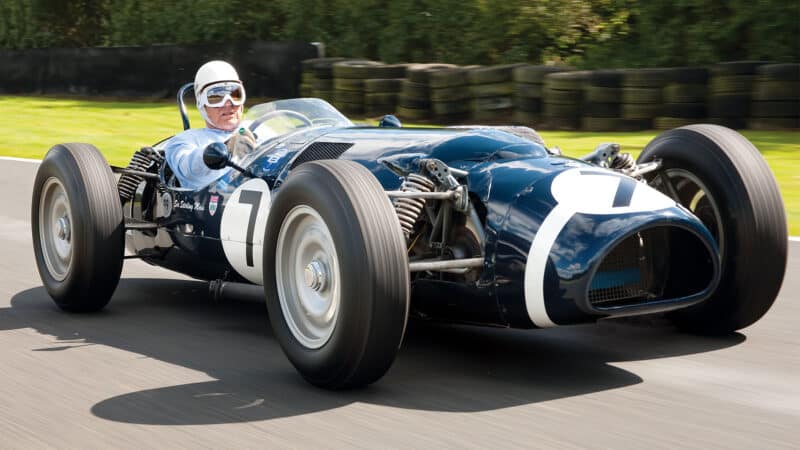
Moss was reunited with the P99 at Oulton Park in 2010
Michael Howell
“The Ferguson was remarkably stable on the wet roads, its braking, even without the use of the Maxarets, being very superior to rear-wheel-driven cars,” was Boddy’s verdict.
“It was incredible in the wet,” Moss told Motor Sport in 2010. “I could overtake on the outside of corners. I remember passing Phil Hill at Aintree and having time to thank him, it was so relaxed. And it has phenomenally good braking. I’ll tell you what, if I were a rich collector I’d buy it to take along to races with my Cooper or whatever and just have it ready in the paddock in case it was a wet race.”
